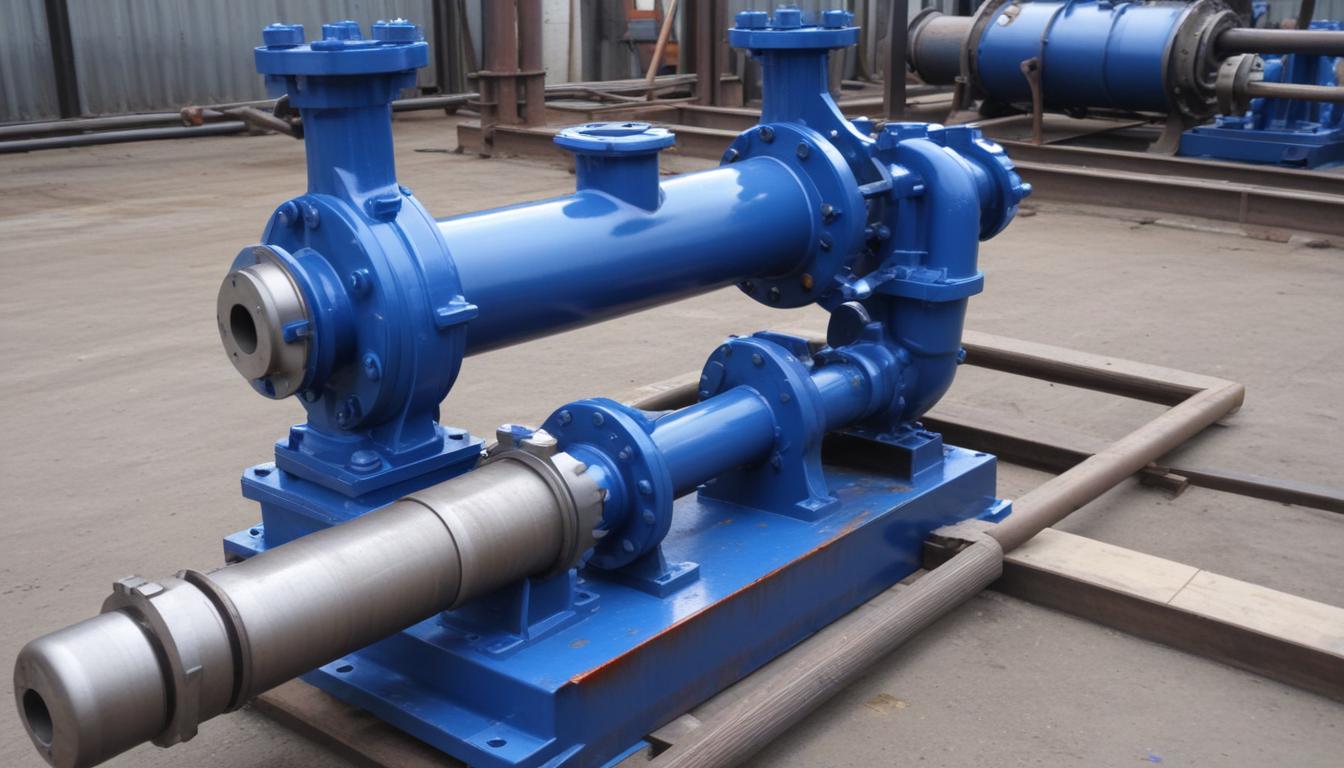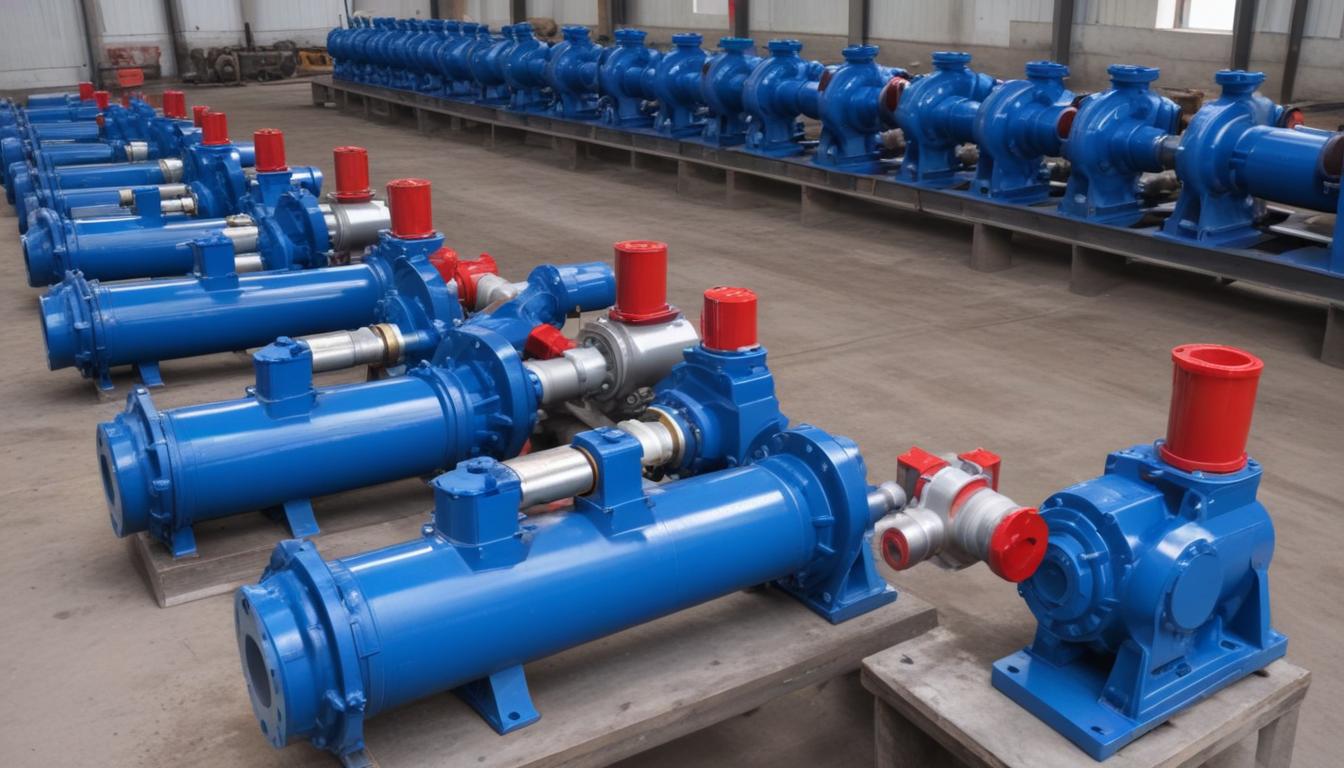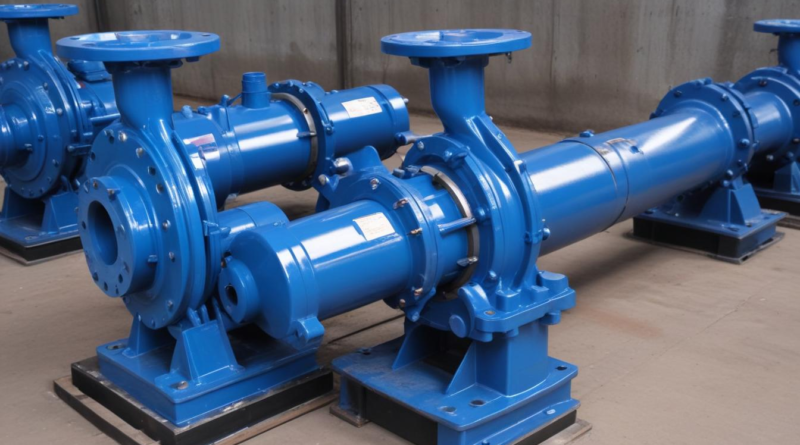Key benefits of using progressive cavity pumps
Progressive cavity pumps offer a multitude of advantages that make them an ideal choice for various industrial applications. One of the primary benefits of these pumps is their ability to handle a wide range of viscosities, from thin liquids to highly viscous slurries. This flexibility allows them to be utilized in diverse sectors, including wastewater treatment, food processing, and oil extraction.
Another significant advantage is their positive displacement design, which ensures a consistent flow rate regardless of changes in pressure. This characteristic makes progressive cavity pumps particularly suitable for applications requiring precise dosing or metering of fluids, thereby enhancing operational efficiency.
Moreover, these pumps exhibit excellent self-priming capabilities, enabling them to operate effectively in low-lying positions and reducing the need for complex piping systems. Their ability to handle solids without clogging further emphasizes the robustness and efficiency of progressive cavity pumps in challenging environments.
In terms of maintenance, progressive cavity pumps are designed for durability and longevity. The construction typically includes resistant materials that prolong the life of the pump and reduce the frequency of maintenance interventions. With fewer moving parts compared to other pump types, such as centrifugal pumps, progressive cavity pumps generally require less upkeep, translating to lower operational costs over time.
In summary, the benefits of utilizing progressive cavity pumps encompass versatility in handling different fluids, reliable performance under varying conditions, ease of maintenance, and cost-effectiveness. These advantages position them as a preferred solution for engineers and pump users seeking reliable pumping solutions in their operations.
Applications of progressive cavity pumps
Progressive cavity pumps are utilized across a broad spectrum of industries due to their adaptability and efficiency in handling various materials. One prominent sector is wastewater treatment, where these pumps excel in transporting sludge and other viscous fluids while maintaining a consistent flow. Their ability to manage high-solids content without clogging makes them a preferred choice in scenarios where other pump types may fail.
In the food and beverage industry, progressive cavity pumps are increasingly adopted for their gentle handling characteristics. They can transfer delicate products like cream, yogurt, and fruit pulp without causing damage, ensuring product integrity. The pumps’ capability to adhere to food safety standards further enhances their appeal in this sector.
The oil and gas industry also benefits from the use of progressive cavity pumps. These pumps are effective in transporting crude oil and other viscous hydrocarbons, showcasing their versatility. Their robust construction allows them to operate in demanding environments, making them essential for both offshore and onshore applications.
In addition to these industries, progressive cavity pumps are valuable in chemical processing for their reliability in transferring corrosive and abrasive substances. Their design allows for easy cleaning and maintenance, which is vital for ensuring safety and efficiency in chemical operations.
Some of the key applications of progressive cavity pumps include:
- Sludge Transfer: Efficiently transporting high-solids content in wastewater treatment.
- Food Processing: Gentle transfer of sensitive products, ensuring quality and safety.
- Oil and Gas Extraction: Handling viscous hydrocarbons in various extraction processes.
- Chemical Handling: Reliable transport of corrosive and abrasive chemicals.
This versatility showcases the widespread advantages of progressive cavity pumps, making them suitable for numerous applications that require reliable and efficient fluid movement.
Efficiency and reliability of progressive cavity pumps

Progressive cavity pumps are renowned for their exceptional efficiency and reliability in various industrial applications. One of the key factors contributing to their efficiency is the constant flow rate achieved through their unique positive displacement mechanism. This translates to minimal pulsation and a steady delivery of fluid, which is paramount in processes demanding precise flow management. Such consistent performance enables users to optimize production processes, ultimately leading to increased productivity and reduced operational downtime.
The reliability of progressive cavity pumps is further underscored by their ability to handle a wide range of viscosities, from thin liquids to thick slurries, while maintaining superior operational parameters. This flexibility means that they rarely require adjustment for different applications, which can significantly reduce the time and costs associated with reconfiguration when switching between materials. Moreover, these pumps are capable of managing abrasive and corrosive substances without compromising their structural integrity, thanks to their robust construction and the use of high-quality materials.
Moreover, progressive cavity pumps are designed with fewer moving parts compared to other types of pumps, such as centrifugal and diaphragm pumps. This design element minimizes the risk of mechanical failure, resulting in a lower total cost of ownership due to reduced maintenance requirements and longer service intervals. For engineers and operators, this means less time spent on repairs and more time focusing on production.
When it comes to energy consumption, progressive cavity pumps also excel, as they typically operate at higher efficiencies than many other pump types. With a favorable volumetric efficiency that often exceeds 90%, they ensure that the energy supplied is effectively converted into pumping action. This high efficiency not only optimizes operational costs but also aligns with sustainability efforts by reducing overall energy usage in industrial processes.
To summarize the efficiency and reliability aspects of progressive cavity pumps, consider the following key points:
| Aspect | Benefit |
|---|---|
| Constant Flow Rate | Ensures precise fluid delivery, enhancing process control. |
| Wide Viscosity Range | Adaptable to various fluids without adjustment. |
| Fewer Moving Parts | Decreases maintenance frequency and increases reliability. |
| High Volumetric Efficiency | Optimizes energy use and lowers operational costs. |
These attributes anchor progressive cavity pumps as a reliable and efficient choice in the engineering and pumping industries, ensuring that they meet the diverse needs of users while providing significant operational advantages.
Maintenance considerations for progressive cavity pumps
Maintenance for progressive cavity pumps is a critical aspect that directly impacts their operational longevity and performance. The design of these pumps allows for relatively straightforward maintenance compared to other pump types, which is particularly beneficial for engineers and operators who prioritize efficiency and reliability in their operations.
One major advantage of progressive cavity pumps is their modular design. This structure generally allows for the quick replacement of individual components, such as the stator or rotor, without the need to dismantle the entire pump unit. As a result, maintenance downtime is minimized, helping to maintain a seamless flow in production processes.
Regular maintenance checks are essential for ensuring that progressive cavity pumps operate at peak efficiency. Recommended practices include:
- Visual Inspections: Regularly checking for leaks, unusual vibrations, or signs of wear can help preempt costly repairs.
- Lubrication: Keeping the pump’s moving parts lubricated ensures smooth operation and reduces friction, thereby prolonging the life of the pump.
- Cleaning: Periodic cleaning of the pump and its components is crucial, especially when handling viscous or abrasive materials. This prevents build-up that could impair performance.
- Seal Replacement: Monitoring the condition of the seals and replacing them as necessary is vital for maintaining operational efficiency and preventing leaks.
Furthermore, training personnel on proper operational practices can significantly reduce wear and tear on the pump. Ensuring that users understand the specific operating limits and fluid characteristics that the pump can handle will prevent mechanical failures and extend its lifespan.
Another important aspect of maintenance is monitoring the performance metrics of the pump. Regular assessments of flow rates, pressure levels, and energy consumption can provide valuable insights into the pump’s condition and help identify any areas that may require attention.
The maintenance considerations for progressive cavity pumps highlight their user-friendly design and operational efficiency. Implementing a proactive maintenance strategy not only enhances pump reliability and performance but also ensures that the numerous benefits of utilizing progressive cavity pumps are fully realized, aiding engineers and pump users in achieving their operational goals.
Comparative analysis with other pump types

When comparing progressive cavity pumps to other pump types such as centrifugal, diaphragm, and gear pumps, several differentiating factors highlight their unique advantages for users in various industries. One of the most significant aspects of progressive cavity pumps is their positive displacement mechanism, which fundamentally alters how fluid is moved compared to centrifugal pumps that rely on kinetic energy. This allows for a more consistent flow rate, irrespective of changes in pressure or viscosity, making them an excellent choice for applications requiring precision.
In terms of operational flexibility, progressive cavity pumps excel in handling a wide range of viscosities and fluid types, including those with high solids content. While centrifugal pumps may struggle with viscous fluids and often require auxiliary equipment for effective solids handling, progressive cavity pumps manage these materials effortlessly. This capacity to transfer both thin and thick fluids without extensive adjustments or modifications presents a significant advantage in maximizing throughput and reducing operational downtime.
Another crucial comparison emerges when considering the need for maintenance. Progressive cavity pumps typically have fewer moving parts than diaphragm and gear pumps, leading to lower mechanical failure rates. This structural simplicity reduces the frequency of maintenance interventions and associated costs. The modular design of these pumps allows for easy replacement of components, ensuring that maintenance can be performed quickly and efficiently, thus minimizing downtime.
Energy efficiency is another strong point for progressive cavity pumps. They generally operate at a higher volumetric efficiency compared to many other pump types, often exceeding 90%, which translates into reduced energy consumption. Lower energy usage is not only cost-effective but also contributes to sustainability efforts within operations. In contrast, diaphragm pumps, while capable in certain applications, tend to have lower efficiencies and can consume more energy due to their operational design.
The following table summarizes the comparative advantages of progressive cavity pumps versus other pump types:
| Pump Type | Key Advantages |
|---|---|
| Progressive Cavity Pumps | Consistent flow, high viscosity handling, fewer moving parts, high volumetric efficiency. |
| Centrifugal Pumps | High flow rates, suitable for low-viscosity fluids, often less complex design. |
| Diaphragm Pumps | Good for hazardous fluids, self-priming, can handle solids but with higher energy costs. |
| Gear Pumps | Excellent for accurate dosing, but higher maintenance due to more complex parts. |
Understanding these comparative aspects enhances the decision-making process for engineers and fluid handling specialists seeking the most suitable pump type for their specific applications. The benefits of using progressive cavity pumps become evident when considering their efficiency, flexibility, and lower maintenance needs, making them a compelling choice in the spectrum of pump technologies.



